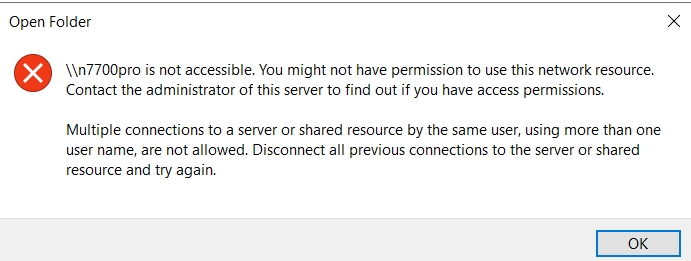I have been having a very specific problem with saved passwords (credentials) in my recently upgraded Windows 10 2004. I know that Susan Bradley mentioned that many people are having problems that may related to third party software (HP). In my case, Windows no longer remembers the password for one of three NAS drives I have on my local network. The device with the problem is made by Thecus. I also have two Syn0logy NAS drives on the local network, and neither of them is having a problem. I have not noticed any other issues. Only when I try to access the Thecus device, I get an error that the password is invalid and asks me to enter one. I enter it, and mark to save in credentials. It will then work until I next boot up, when the error comes back.
I have tried running sfc /scannow. It found an error with a .NET file that was fixed, and gave a warning about some windows system files having multiple owners. But it did not fix the problem. I also created a local computer account, and logged into it. Then I logged back into my online Windows account. Again, no benefit.
Are there any other suggestions? I know it seems to be a bug in 2004, but I am hoping there might be a workaround until Microsoft fixes it. Thanks.




